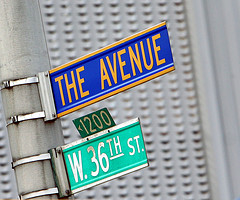 Many people come to us asking for raw data or statistics specific to individual Baltimore neighborhoods (Hampden, Charles Village, Mt. Vernon, East Baltimore, etc.). While finding out more about our fair city’s neighborhoods is a reasonable request, there is one problem that makes it pretty difficult. The most authoritative demographic data — that which comes from the U.S. Census Bureau — does not actually come readily available at the neighborhood level.
Many people come to us asking for raw data or statistics specific to individual Baltimore neighborhoods (Hampden, Charles Village, Mt. Vernon, East Baltimore, etc.). While finding out more about our fair city’s neighborhoods is a reasonable request, there is one problem that makes it pretty difficult. The most authoritative demographic data — that which comes from the U.S. Census Bureau — does not actually come readily available at the neighborhood level.
There are 11 levels of geography for the state of Maryland: Metropolitan and Micropolitan Statistical Areas (MSAs), Counties, County Subdivisions, Places, Census Tracts, Block Groups, Blocks, Congressional Districts, School Districts, State Legislative Districts, and Zip Code Tabulation Areas (ZCTAs). You need to know that data is not necessarily available for all Census data products at all of these geographic levels (data may just not be collected, counts are too small to be meaningful and/or presents a confidentiality problem). Baltimore City itself is a County and a Place, and it does have its own Census Tracts (most commonly used for small area analysis) and Block Groups.
It’s important to have a basic understanding of Census geography before you start working with Census data, and essential before ever beginning to work with ArcGIS.
The Baltimore Neighborhood Indicators Alliance (BNIA) has developed a method to create Baltimore Community Statistical Areas that are stable enough to track changes in city conditions and demographics over time (longitudinal analysis). As neighborhoods can shift and change as well as vary in size, these BCSAs do comprise more than one neighborhood.
